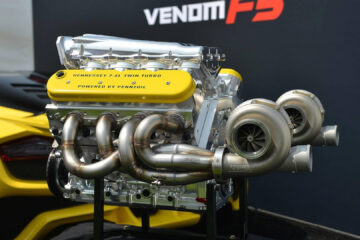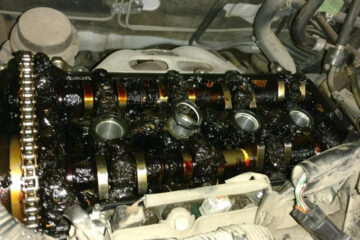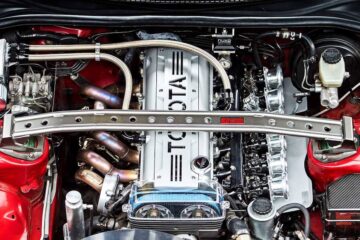Buying a used car can feel like a gamble—especially when it comes to engine reliability. The paint might shine, the interior might sparkle, but under the hood could lie a worn, neglected powertrain that’s ready to die on you six months after the purchase.
A reliable engine is the heart of a dependable car. But how can you spot one in a sea of used vehicles, flashy listings, and suspiciously cheerful sellers? This guide breaks down practical strategies for evaluating engine reliability in the used car market, along with a handy table of engine families known for long life.
Why Engine Reliability Matters Most
The engine is the most expensive and complex part of your car. While you can live with a squeaky suspension or a failing air conditioning system, a worn or damaged engine often means thousands of dollars in repairs—or total replacement.
A reliable engine means:
- Fewer unexpected breakdowns
- Better fuel efficiency over time
- Lower long-term maintenance costs
- Strong resale value
Even the best chassis or infotainment system won’t matter if the engine gives out prematurely. Let’s dive into how to spot a good one.
Step 1: Understand Which Engines Are Actually Reliable
Some engines are legends in the automotive world for their durability. Others? Not so much. It pays to know the reputations of different engine families and avoid problematic ones.
Here’s a comparison table of some of the most and least reliable engine families often found in the used market:
| Engine Family | Brand | Displacement(s) | Notable Cars | Reliability Verdict | Known Issues |
|---|---|---|---|---|---|
| Toyota 1NZ-FE | Toyota | 1.5L | Yaris, Echo, Vios | ★★★★☆ Excellent | Coil packs, minor oil leaks |
| Honda K20/K24 | Honda | 2.0–2.4L | Accord, CR-V, Civic Si | ★★★★★ Bulletproof | Timing chain tensioner (older models) |
| GM LS V8 | Chevrolet | 4.8–6.2L | Silverado, Camaro, Corvette | ★★★★☆ Very Good | Oil consumption in higher-mileage variants |
| BMW N47 | BMW | 2.0L Diesel | 1/3/5 Series (2007–2014) | ★★☆☆☆ Problematic | Timing chain failures, swirl flaps |
| VW EA888 Gen 3 | Volkswagen/Audi | 1.8–2.0L Turbo | Golf GTI, A4, Passat | ★★★☆☆ Improved | Carbon buildup, PCV issues |
| Subaru EJ25 | Subaru | 2.5L Boxer | Outback, Legacy, WRX | ★★☆☆☆ Risky | Head gasket failure, oil leaks |
| Toyota 2UZ-FE | Toyota/Lexus | 4.7L V8 | Land Cruiser, Sequoia, Tundra | ★★★★★ Extremely Durable | Fuel injector seals (minor) |
Note: Star ratings are subjective and based on long-term owner data, mechanic surveys, and known design flaws.
Step 2: Research Specific Models and Years
Even within a “reliable” engine family, specific model years can be problematic. For example, the early Honda 1.5 turbo engines suffered from oil dilution issues, while later models fixed the problem.
Tips:
- Search forums for “[car model] common engine problems.”
- Use resources like CarComplaints.com or owner Reddit communities.
- Look for Technical Service Bulletins (TSBs) or recalls related to the engine.
- If a particular year had a recall for piston slap, timing chain tensioner failure, or oil starvation, that’s a red flag—even if the brand is known for quality.
Step 3: Ask the Seller the Right Engine Questions
Don’t just ask, “Has it been reliable?” Instead, ask these:
- “When was the last oil change and what oil was used?” You want full-synthetic at proper intervals—especially for turbocharged engines.
- “Has the timing belt/chain been replaced?” Belts typically need replacement every 60,000–100,000 miles. Timing chain rattle is a major warning sign.
- “Has the engine ever overheated?” Overheating can warp the head or damage pistons. Walk away if the answer is yes.
- “Any engine codes or check engine lights?” Insist on a live scan with an OBD2 reader.
- “Does it burn oil or need top-offs between changes?” Excessive oil consumption suggests worn piston rings or valve seals.
Step 4: Pop the Hood — What to Look (and Smell) For
A quick inspection can tell you a lot. Look for:
Visual Red Flags
- Heavy oil leaks from valve covers, head gaskets, or oil pans
- Burnt or black oil on the dipstick
- Low or dirty coolant (milky = head gasket issue)
- Frayed belts or cracked hoses
- Unusual wiring patches or sensor bypasses
Smells to Note
- Burnt oil = leaking valve cover or turbo seal
- Coolant sweet smell = potential head gasket leak
- Fuel odor = injector or fuel line leak
A little dust is normal. Heavy grime, oily residue, or inconsistent engine bay cleanliness often suggest poor maintenance.
Step 5: Cold Start Test
Ask to start the engine from cold. This is the best time to detect issues.
Watch and listen for:
- Rattles or knocking on startup (bad timing chain, worn bearings)
- Blue smoke (burning oil)
- Rough idle or misfire within the first minute
Let it idle and observe engine behavior. Is the idle smooth and consistent? Do revs fluctuate? Is there hesitation when you blip the throttle?
Also, check the exhaust:
- White smoke that disappears = normal condensation
- Thick white smoke that stays = head gasket failure
- Blue smoke = oil burning
Step 6: Road Test Like a Detective
During your test drive:
- Accelerate gradually and aggressively. Listen for pinging, knocking, or hesitation.
- Let the RPMs climb. A healthy engine should feel smooth—not strained or uneven.
- Check for smoke under load. Any smoke on acceleration is a bad sign.
- Test engine braking. Remove your foot from the gas and feel for deceleration. A lack of compression might indicate worn piston rings.
- Watch the temperature gauge. It should stay steady. Any sudden rises? Walk away.
Step 7: Scan for Trouble Codes and Freeze Frames
Bring or request an OBD2 scanner. Plug it in and look for:
- Active or pending codes (P-codes like P0300 misfire, P0420 catalytic inefficiency)
- Freeze frame data (shows what the engine was doing when the code was triggered)
- Monitor readiness—make sure emissions systems are not in “not ready” state (indicating a recent reset)
If the seller recently cleared the codes, that’s a sign they may be hiding something.
Step 8: Service History Is Gold
A thick folder of maintenance receipts is worth its weight in gold. Look for:
- Regular oil changes with dates/mileage
- Timing belt/chain service
- Coolant flushes
- Injector cleaning or carbon cleaning (on DI engines)
- PCV valve replacement
If the car has over 100,000 miles and there’s no service history—proceed with caution.
Bonus: Red Flags That Often Mean Engine Trouble Later
- Turbocharged engines with no proof of synthetic oil use
- Engines with Direct Injection (DI) but no intake valve cleaning records
- Luxury European cars with cheap parts receipts
- Performance models owned by young drivers (WRX, GTI, 370Z)
- Cars with mismatched tires or aftermarket suspension (signs of poor ownership)
Top 5 “Sleeper” Used Cars with Durable Engines
| Car Model | Engine | Why It’s Great |
|---|---|---|
| Lexus ES350 (2007–2012) | Toyota 2GR-FE | V6 is nearly bulletproof, low-stress drivetrain |
| Honda Accord (2013–2017) | K24W or EarthDreams | Excellent reliability if maintained, widely available |
| Toyota Corolla (2009–2016) | 1.8L 2ZR-FE | Proven powertrain, easy to maintain |
| Mazda6 (2014–2018) | 2.5L SkyActiv-G | Efficient and reliable with minimal known issues |
| Ford Crown Victoria (2003–2011) | 4.6L Modular V8 | Taxi-tested durability, cheap to fix |
Conclusion: Engine First, Everything Else Second
While many buyers focus on trim levels, touchscreen size, or leather seats, the most important thing in a used car is the engine. A strong, healthy engine will carry you for years. A tired or abused one will bleed you dry.
To choose a car with a reliable engine:
- Know which engines are built to last
- Inspect and test like a pro
- Ask the hard questions
- Don’t let cosmetic features distract you
A bit of patience and a sharp eye can save you thousands. In the world of used cars, reliability isn’t a guessing game—it’s a strategy.







0 Comments